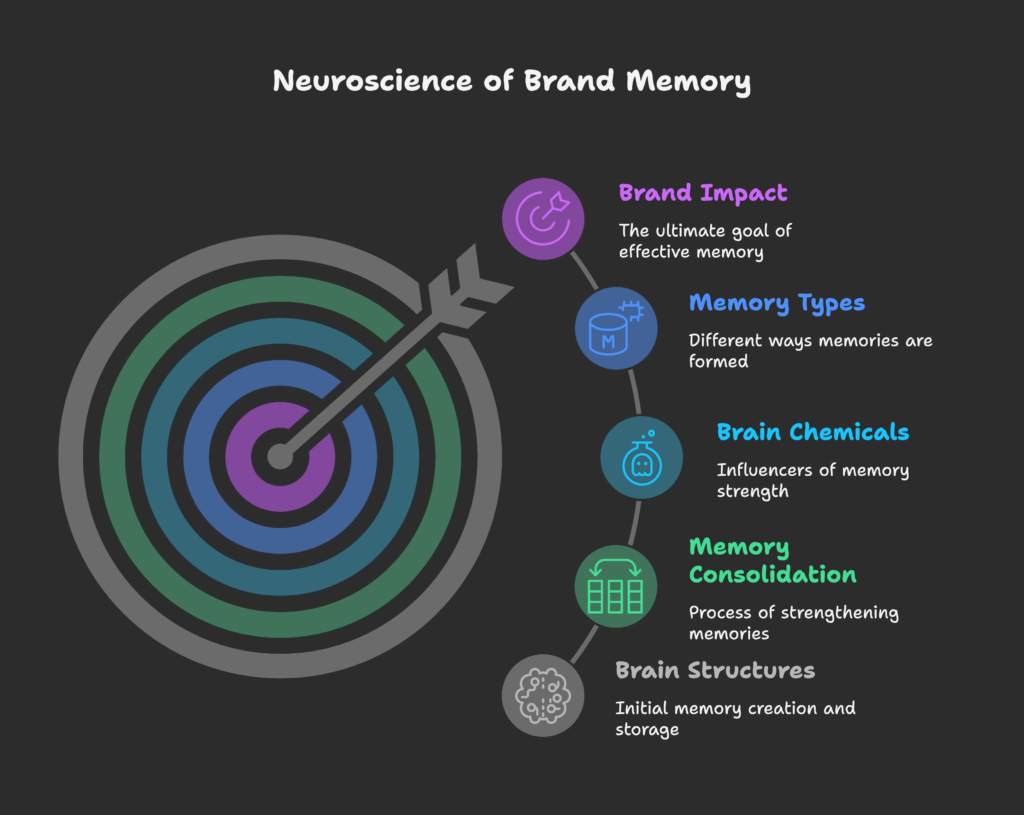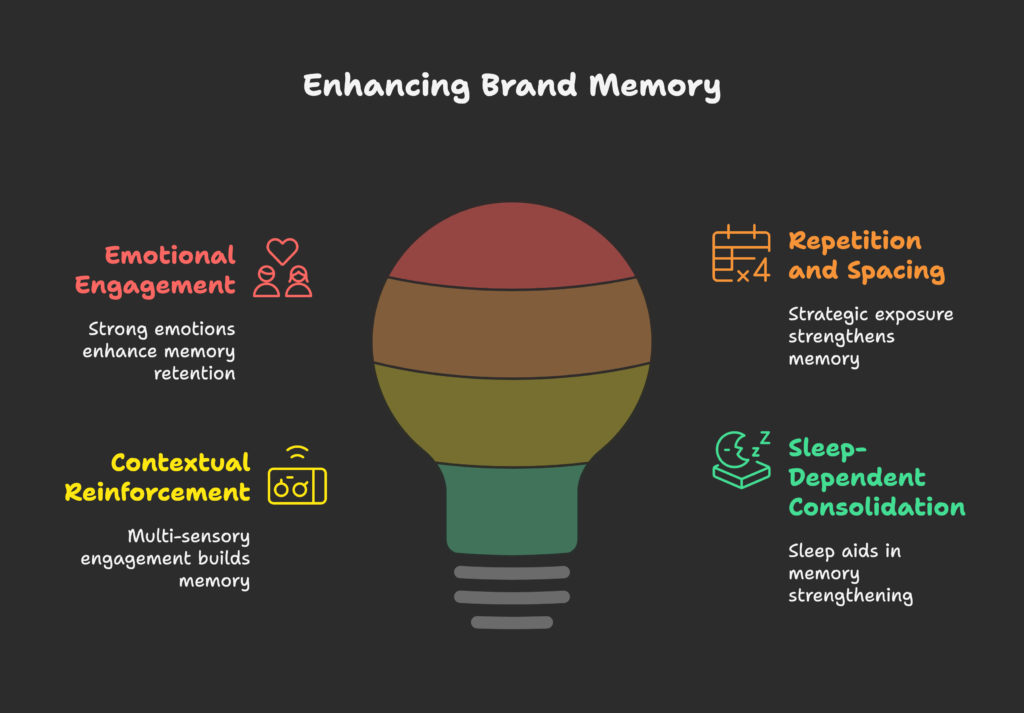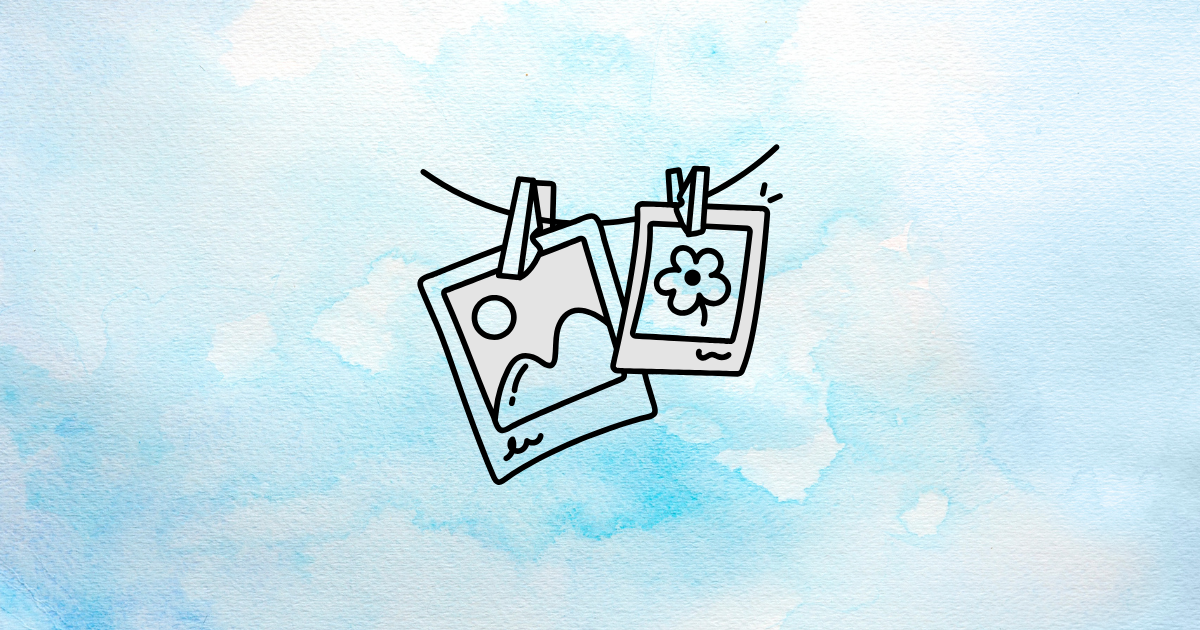Have you ever wondered why some brands stick in your mind for years while others fade away immediately? Or why you can sometimes recognize a logo or jingle without remembering where you’ve seen it before? The secret lies in how our brains store and strengthen memories – a process called memory consolidation.
Did you know that 55% of purchase decisions are influenced by subconscious brand recognition? Or that brands with effective memory consolidation strategies see 70% higher recall rates? Understanding how your customers’ brains remember your brand isn’t just interesting science – it’s a powerful business advantage.
In this article, you’ll learn:
- How memory consolidation works in the brain
- Why some brand experiences stick while others don’t
- Practical strategies to make your brand more memorable
- How to measure if your brand is being remembered effectively
- Real-world examples of brands doing this well
Ready to discover how to make your brand unforgettable? Let’s dive in!
Introduction to Memory Consolidation and Brand Cognition
Before we jump into marketing strategies, let’s understand what memory consolidation actually is. In simple terms, memory consolidation is how your brain transforms short-term memories into long-term ones. It’s like your brain’s filing system, deciding which experiences to keep and which to discard.
For brands, this process is crucial because it determines whether customers will:
- Recall your brand (actively remember it when thinking about a product category)
- Recognize your brand (feel familiarity when seeing it again)
Both processes happen in different parts of the brain and influence purchasing decisions in different ways. While you might think conscious recall is more important, research shows that subconscious recognition often has a stronger effect on buying behavior.
Our brains actually have two memory systems working together. The explicit system (requiring conscious effort) handles facts and specific experiences, while the implicit system stores automatic, unconscious memories. Effective branding targets both systems to create powerful, lasting impressions.
Interestingly, sleep plays a major role in brand memory. During sleep, our brains replay and strengthen important memories from the day – including brand experiences. This is why advertising seen before bedtime can be particularly effective!
Now that we understand the basics of how memories form, let’s explore the fascinating brain structures that make brand memories stick – and how marketers can leverage them for better results.
Neuroscience of Memory Consolidation in Brand Contexts
Don’t worry – you won’t need a neuroscience degree to understand this section! We’ll explore the key brain structures involved in brand memory in simple terms.

When you encounter a brand, here’s what happens in your brain:
- The hippocampus (a seahorse-shaped structure deep in the brain) creates the initial memory
- Over time, that memory transfers to the medial prefrontal cortex for long-term storage
- During sleep, special brain waves called slow oscillations and sharp-wave ripples strengthen these memory pathways
Brain chemicals also play important roles:
- Dopamine strengthens memories connected to rewards or pleasure (think: satisfying unboxing experiences)
- Acetylcholine helps with paying attention to brand messages
- Cortisol (a stress hormone) can actually interfere with memory formation – explaining why stressful ad experiences are often forgotten
Different types of memories affect brands in unique ways:
Episodic Memory
These are memories of specific experiences, like watching a memorable Super Bowl commercial or your first visit to an Apple Store. They’re rich in context and emotion.
Semantic Memory
These are fact-based memories, like knowing that Nike means athletic performance or that Volvo stands for safety.
Implicit Memory
These are subconscious associations that don’t require active recall – like feeling nostalgic when smelling a certain perfume brand or automatically humming a brand jingle.
Understanding these brain mechanisms is fascinating, but what really matters is how to use this knowledge practically. Let’s explore the key factors that determine whether your brand will be remembered or forgotten!
Factors Influencing Brand Memory Consolidation
Not all brand experiences are created equal in the memory department.

Four key factors determine whether your brand will stick in customers’ minds:
Emotional Engagement
Emotions are memory superchargers. When customers feel something strongly while experiencing your brand, a brain region called the amygdala activates and flags that memory as important.
Consider Dove’s “Real Beauty” campaign. By triggering positive emotions around body acceptance, they created memories far stronger than typical beauty product ads. The brain’s amygdala essentially tagged these experiences as “save this one” during memory consolidation.
Repetition and Spacing
Seeing a brand once rarely creates lasting memories. However, there’s a science to effective repetition:
- Repeating exposures within a 24-hour window takes advantage of natural consolidation cycles
- Varying the creative slightly with each exposure prevents habituation (when the brain starts ignoring familiar stimuli)
- Spaced repetition (returning after increasing intervals) strengthens memories more effectively than rapid-fire exposure
Contextual Reinforcement
Memories form stronger connections when multiple senses are involved. This is why the most memorable brands engage several senses:
- Visual elements (logos, colors, packaging)
- Sounds (jingles, distinctive voice)
- Sometimes even smells or textures (think of the distinctive smell in Abercrombie stores)
Keeping these elements consistent across channels creates more robust memory networks.
Sleep-Dependent Consolidation
Perhaps the most surprising factor is sleep. During slow-wave sleep, our brains actively strengthen important memories from the day. Brand experiences seen before sleep have a better chance of being consolidated into long-term memory.
This explains why evening TV commercials or social media ads seen before bedtime often show better recall rates – they benefit from overnight processing!
Now that we understand what makes brands memorable, let’s discover practical strategies you can implement to enhance your own brand’s memory consolidation!
Strategies to Enhance Brand Memory Consolidation
Here’s where we turn science into action! These evidence-based strategies can help your brand create stronger, more durable memories:
Emotional Storytelling Frameworks
Stories are memory machines. When information is presented as a narrative, it activates both the hippocampus and prefrontal cortex – the exact pathway needed for strong consolidation.
Apple’s iconic “Think Different” campaign exemplifies this approach. Rather than focusing on product features, it told an emotional story about creative rebels changing the world. This narrative structure created deeper, more meaningful memory traces than technical specifications ever could.
To implement this strategy:
- Create brand narratives with clear emotional arcs
- Include relatable characters or situations
- Ensure your brand plays a meaningful role in the story resolution
Neuromarketing Techniques
Leading brands now use brain-measurement tools to optimize memory formation:
- EEG (electroencephalography) can measure attention levels during ad viewing, helping identify moments when memory encoding is strongest or weakest
- Eye tracking combined with EEG shows which visual elements capture attention and create stronger memories
While you might not have access to advanced lab equipment, you can still apply principles from neuromarketing research:
- Place key brand elements where eye-tracking studies show attention naturally flows
- Use contrast, movement, and faces to draw attention to important elements
- Test different versions of ads to see which generates better recall after 24-48 hours
Memory Reactivation Protocols
Memories become stronger when they’re briefly reactivated. This process, called reconsolidation, explains why strategic reminders are so effective.
Smart brands create reactivation systems:
- Consistent visual triggers (logos, colors) across touchpoints
- Audio cues (jingles or sonic branding) that trigger brand recall
- Interactive elements that encourage active memory retrieval (like gamified ads or quizzes)
Sleep-Optimized Campaigns
Since sleep is crucial for memory consolidation, timing your marketing to work with sleep cycles can be highly effective:
- Evening social media campaigns that reach users just before bedtime
- Relaxing content (like ASMR videos) that induces theta brain waves associated with memory encoding
- Morning follow-ups that reactivate memories formed during overnight consolidation
These strategies sound great in theory, but how do you know if they’re actually working? Let’s explore how to measure brand memory consolidation effectively.
Measuring Brand Memory Consolidation
To improve memory consolidation, you need to measure it. Here are practical approaches to determine whether your brand is creating lasting impressions:
Neuroscientific Tools
For companies with bigger budgets, advanced measurement options include:
- fMRI scanning to observe memory transfer between brain regions
- Combined eye-tracking and EEG to measure implicit recognition patterns
Behavioral Metrics
More accessible measurement techniques include:
- Delayed recall tests – Ask customers what brands they remember from a category after 24-48 hours, not immediately after exposure
- Recognition in clutter – See if customers can spot your brand elements among similar distractors
- Implicit association tests – Measure how quickly customers connect your brand with key attributes
Predictive Analytics
Modern data approaches are making memory measurement more accessible:
- AI models that predict memory consolidation from engagement metrics
- Sentiment analysis tools that correlate emotional responses with later recall
- A/B testing frameworks specifically designed to measure memory impact over time, not just immediate clicks
Even simple approaches can provide valuable insights. For example, asking “What brands in [category] come to mind first?” a week after campaign exposure gives a more accurate picture of memory consolidation than immediate feedback.
Of course, memory consolidation techniques come with challenges. Let’s examine the potential pitfalls and ethical considerations next.
Challenges and Ethical Considerations
While understanding memory consolidation offers powerful advantages, it also presents several challenges:
Information Overload Risks
In today’s digital environment, customers are bombarded with thousands of brand messages daily. This creates serious memory interference problems:
- Similar brand messages compete for the same memory resources
- Cognitive saturation leads to diminishing returns on ad frequency
- Screen time before bed can disrupt sleep quality, impairing overnight consolidation
The solution involves finding the optimal balance between frequency and novelty – enough repetition to build memory without causing interference or habituation.
Ethical Neuromarketing
As our understanding of memory processes grows, so do ethical questions:
- Should companies collect neural data without explicit consent?
- Is it ethical to target sleep-dependent memory processes?
- Where is the line between effective persuasion and manipulation?
Responsible brands maintain transparency about their memory-enhancing techniques rather than attempting to influence customers covertly.
Cross-Cultural Variability
Memory processes aren’t universal across cultures. Research shows significant differences in how memory works across cultural contexts:
- Collectivist cultures (like many Asian societies) often prioritize group-relevant memories
- Individualist cultures (like the US) tend to consolidate self-relevant information more strongly
- Cultural sleep patterns affect overnight consolidation opportunities
Global brands need localized consolidation strategies that account for these differences rather than assuming one-size-fits-all approaches.
Theory is helpful, but nothing beats seeing these principles in action. Let’s examine some real-world success stories of brands masterfully applying memory consolidation principles.
Case Studies and Industry Applications
Let’s look at how some of the world’s most memorable brands apply these scientific principles:
Nike: Semantic Memory Mastery
Nike’s “Just Do It” campaign demonstrates perfect semantic memory consolidation:
- Consistent message repeated across decades
- Emotional stories featuring both celebrities and ordinary people
- Strategic spacing of similar-but-varied ads
- Clear attribute association (Nike = performance, determination)
The result? A slogan so deeply consolidated that many people automatically think “Just Do It” when they see a swoosh – even without text.
Coca-Cola: Multi-Sensory Branding
Coca-Cola excels at creating rich, multi-sensory memory networks:
- Visual consistency (the red and white logo has remained recognizable for over a century)
- Distinctive bottle shape engaging tactile memory
- Consistent sonic branding across different campaigns
- The unique taste creates powerful flavor memories
- Emotional holiday campaigns targeting pre-sleep viewing hours
This multi-channel consistency creates redundant memory pathways – if one fails, others maintain the brand connection.
Dove: Emotional Reconsolidation
Dove’s “Real Beauty” campaign demonstrates effective memory reconsolidation:
- Created strong initial emotional memory traces
- Periodically reactivated those memories with new but connected campaigns
- Maintained consistent visual and message elements while evolving the story
- Connected brand attributes to deeply personal emotional states
By repeatedly reactivating and strengthening these emotional memory associations, Dove transformed its brand positioning in consumers’ long-term memory.
The science behind memory consolidation continues to evolve rapidly. Let’s take a glimpse at the cutting-edge developments that will shape the future of memorable branding.
Future Directions and Innovations
The intersection of neuroscience and marketing is advancing rapidly. Here’s what’s on the horizon:
AI-Powered Personalization
Emerging technologies are making personalized memory consolidation possible:
- AI systems that identify individual memory patterns from behavioral data
- Dynamic creative optimization that adjusts content based on predicted consolidation patterns
- Personalized spacing algorithms that time repeat exposures for optimal memory formation
Advanced Consolidation Techniques
Research labs are exploring fascinating new approaches:
- AR/VR experiences creating hyper-vivid episodic memories through immersion
- Targeted sound patterns during ads that mimic brain waves associated with memory formation
- Closed-loop systems that detect optimal moments for brand message delivery based on attention states
Ethical Frameworks
As memory-targeting becomes more sophisticated, ethical guidelines are developing:
- Industry self-regulation around sleep-targeted advertising
- Transparency requirements for neuromarketing techniques
- Consumer education about memory-aware marketing practices
The brands that will thrive in this future are those that balance effectiveness with ethics – creating memorable experiences that respect consumer autonomy.
Conclusion
Understanding memory consolidation gives brands a powerful advantage in creating lasting impressions. By working with – rather than against – the brain’s natural memory processes, marketers can create more effective, efficient campaigns that drive long-term brand equity.
The key takeaways:
- Memory consolidation transforms short-term brand encounters into long-term associations
- Emotional engagement, strategic repetition, multi-sensory experiences, and sleep-aligned timing enhance this process
- Measurement should focus on delayed recall, not just immediate impact
- Ethical considerations must balance effectiveness with respect for consumer autonomy
By applying these science-backed principles, brands of any size can create more memorable experiences that drive recognition, recall, and ultimately, revenue.
Remember: Shopify store owners looking to implement these memory consolidation strategies can boost their sales with Growth Suite – the all-in-one tool for creating memorable brand experiences that convert!
References
- Hupbach, A., et al. (2007). Reconsolidation of episodic memories. Learning & Memory. https://doi.org/10.1101/lm.365707
- Barron, D., et al. (2024). Memory consolidation as reinforcement learning. Frontiers in Computational Neuroscience. https://doi.org/10.3389/fncom.2024.1538741
- Nielsen (2017). Understanding memory in advertising. https://www.nielsen.com/insights/2017/understanding-memory-in-advertising/
- FasterCapital (2024). Consumer memory enhancement strategies. https://fastercapital.com/content/Consumer-memory-enhancement-strategies.html
- Neuron Marketing (2024). Neuroscientific brand recall techniques. https://neuronmarketing.com/brand-recall-techniques/
- Semantic Scholar (2024). Neuromarketing and AI-mediated memory effects. https://doi.org/10.5281/zenodo.123456



